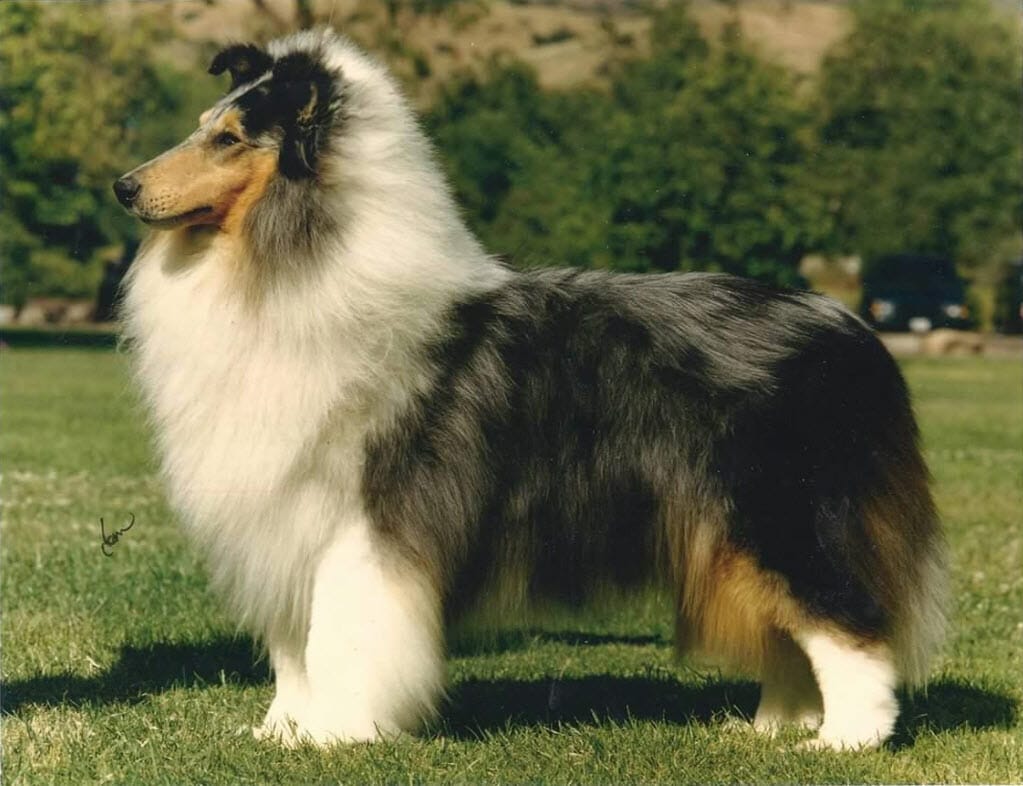
The Hawkins System© Story
The Collie Breed’s Ranking System
This research was originally published in the Collie Club of America’s Summer 2020 Bulletin. Thank you to Bob Hawkins and Les Hutchins for contributing time to this project. It was an honor to learn from their deep experience and understand their perspectives. The Collie breed is indebted to these men for decades of notable service.
Introduction:
Since 1963, the Collie Club of America has used the Hawkins System© to determine its top-ranked Collies. Many current fanciers are not aware of the system’s origin, history, or purpose. It is a story that has not been well-told through the decades. Yet, it is an integral part of breed history and tradition.
The Hawkins System ranks the top Collies in each variety – those that triumphed at the most significant shows, against the toughest competition, and under the most respected judges. It is a breeders’ system intended to identify the finest breed specimens. No other ranking system is as effective at recognizing the year’s best Collies.
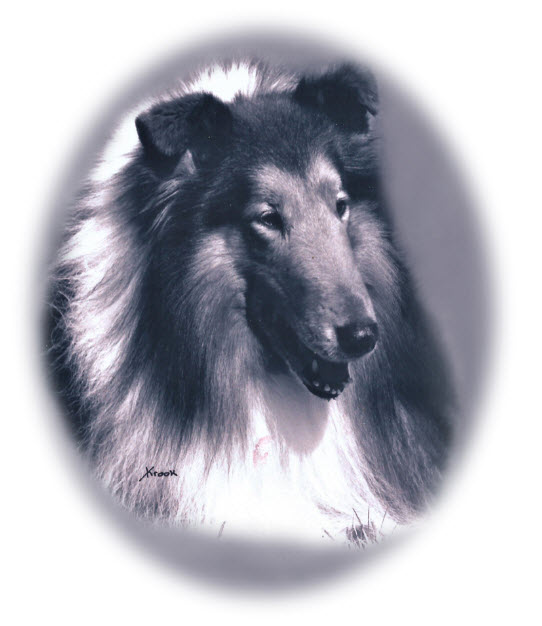
The History of the Hawkins System
Bob Hawkins was a History and Criminology student at the University of Maryland in the early 1960s. Unsatisfied with the methods popular Collie magazines were using to rank the top dogs, he began to develop a breed-specific system. The research process was extensive, including multiple visits to the Library of Congress to access AKC Gazettes going back to the early 1900s. His goal was to create an objective model that would capably bring the best dogs to the top. He didn’t know it then, but his project changed the way Collies would be ranked for many decades to come.
Modeling off the successful show careers of Ch. Parader’s Bold Venture and Ch. Hazeljane’s Bright Future, he designed a system to reward both all-breed and specialty dogs. The intention was that the highest rewards would go to the top specialty dogs that could also win in competitive all-breed competition. However, exclusively all-breed or specialty dogs could still achieve strong rankings if they were dominant in their respective rings.
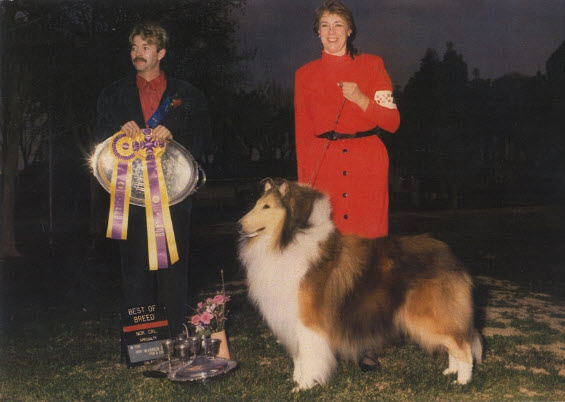
Calculation and Publication
The Hawkins System rankings are calculated from year-end AKC data published in late January. While the AKC has made some advancements in their data storage and delivery methods, the Hawkins calculations remain a manual tabulation by the system custodian. The data is processed through the system model, which adds bonus points to qualifying Best of Variety (BOV) and Best of Opposite (BOS) wins. Find the full model details and explanation at https://www.collieclubofamerica.org/hawkins/2012-description-of-hawkins-system-for-web-page.pdf
When the ranking calculations are completed, the Top 10 Collies in each variety are posted on the CCA website and the owners are contacted. Those dogs are invited to the Top 10 Invitational celebration at the CCA National Specialty. The Top 12 in each variety are featured in the annual CCA calendar, and the Top 20 are listed in the CCA Yearbook. The top-winning blue merle is awarded the Elisabeth E. Browning Memorial Bowl (previously the Ch. Tokalon’s Blu Banner, CD Bowl).
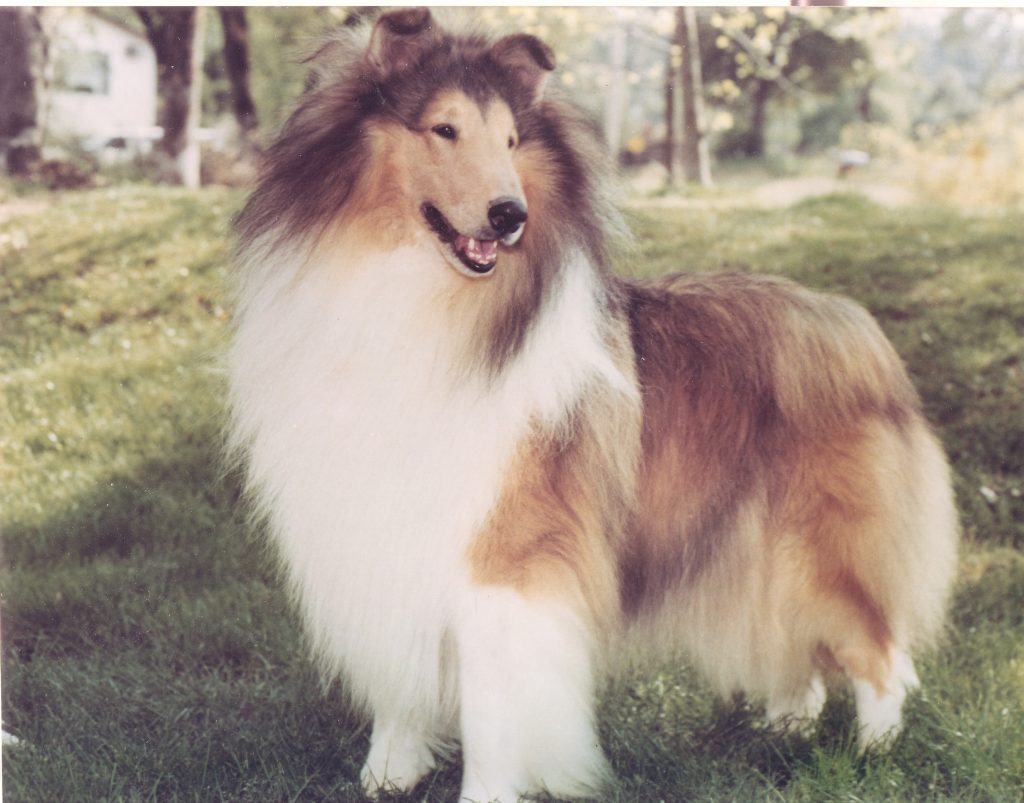
Why Does the Collie Need the Hawkins System?
Most national breed clubs determine their rankings using one of the established cumulative systems such as Canine Chronicle (Breed or All-Breed systems), ShowSite Magazine, or Dog News. In Collies, those rankings often don’t provide an accurate ranking of the best dogs in competition each year. Many of the ranked dogs are simply the ones exhibited the most.
The Collie is a breed that is evaluated by its hard-to-achieve physical attributes specified in the Collie Standard. Commonly referred to as virtues, they include breed-specific characteristics like correct expression, proper eye set and chiseling, head detail, turn of muzzle, finish, flat frontal bones, curved balanced body lines, etc. It requires years of study and observation to understand and consistently recognize the finer details. For the dedicated Collie fanciers, it is a lifetime endeavor to sharpen their eye and crystalize their mental image of the perfect Collie.
In most breeds, an experienced judge with familiarity of the breed standard can capably adjudicate an entry. However, most Collie-licensed all-breed judges — including many herding breed specialists — are simply not able to consistently reward the best Collies. Even among specialty judges, there is a wide range of of abilities to recognize the critical virtues. The expert breeder-judges who possess a keen eye for virtues are held in high regard and belong to an exclusive list. Judges’ abilities were a vital consideration in the design of the Hawkins System.

The Purpose of the Hawkins System
The Hawkins System was created for a specific purpose — to accurately and objectively identify the best Collies in competition each year. It directly addresses deficiencies in other systems that are unable to do justice for a truly virtue-centric breed. It reflects the expert opinions of the judges of the largest, most important shows. When analyzing Hawkins-ranked dogs, knowledgeable fanciers should agree that those are the dogs that rose to the top in the most vigorous competition. They are Collies that the breed can be proud of.
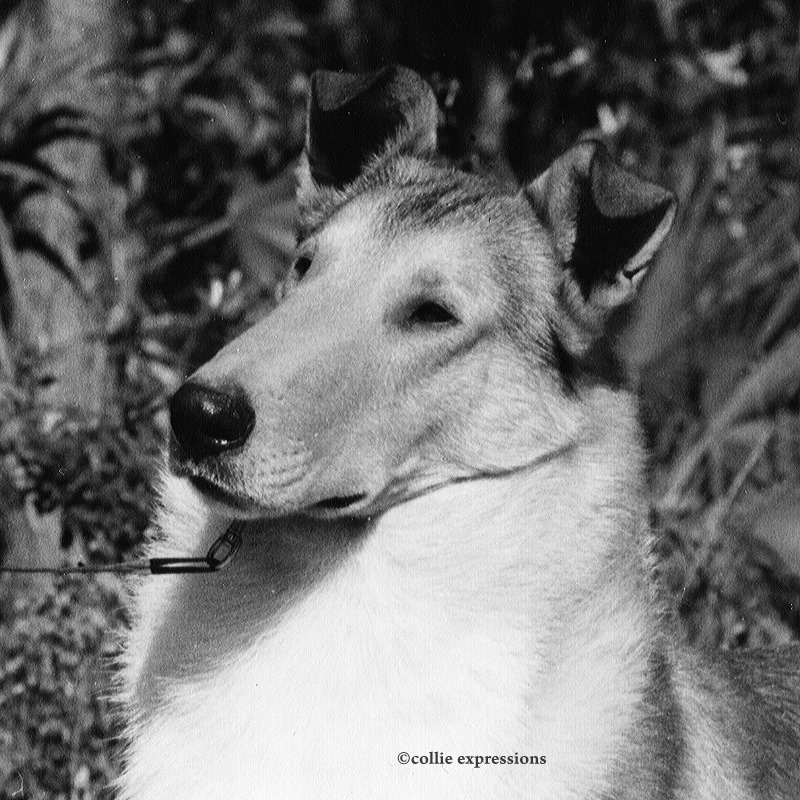
The Core Differentiators Between Hawkins and Other Ranking Systems
All major dog ranking systems are cumulative in nature. They only count the total number of dogs defeated, regardless of how many shows the points were acquired at or the size of the shows. They are structured to measure the most – which often precipitates marathon campaigns for the most entries, the most shows, the most miles, and often the most money and advertisements. Breed quality is a small part of the equation.
The Hawkins System is philosophically different. Instead of rewarding the most, it is designed to reward the best. The Hawkins System has the inherent incentive to compete against top competition. It devalues the common strategy of finding small variety entries for an easy path to the group.
The Hawkins System is philosophically different. Instead of rewarding the most, it is designed to reward the best.
Another core differentiator in the Hawkins Systems is its recognition and valuation of the Best of Opposite (BOS) award. Where other systems only give points to the BOV/BOB winner, Bob Hawkins identified major BOS wins as important, signifying true quality. The BOS points and bonus structure is a critical component of the Hawkins System in a breed where the finest breed type is often more prominent in one sex versus the other.
There is a place for the general breed and all-breed ranking systems within Collies. For those who target Herding group rankings or those in geographical regions with few specialties, the cumulative systems provide a sound measure of accomplishment. However, the expectation should not be that those results will mirror Hawkins rankings.
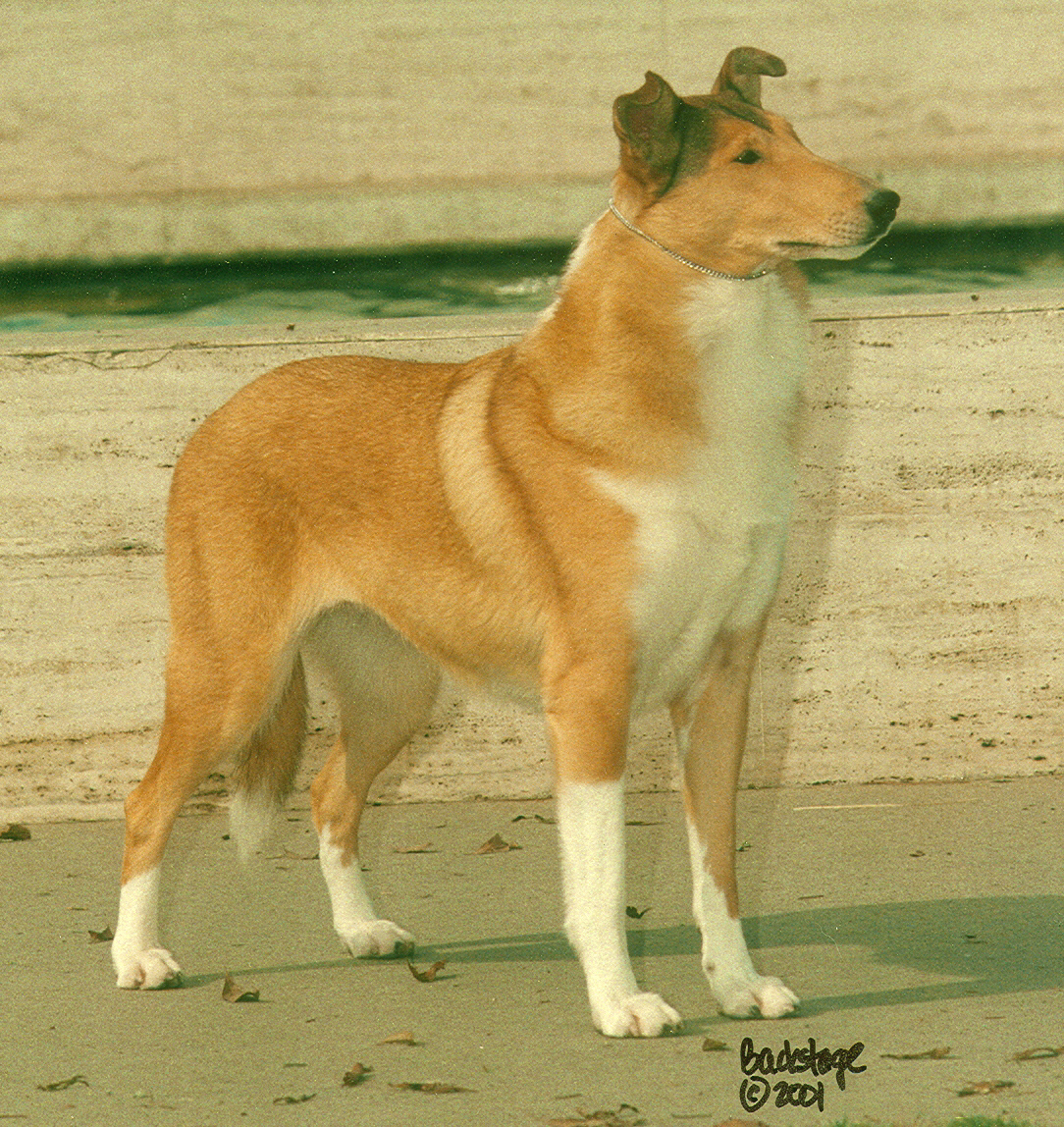
Benefits of the Hawkins System
Past rankings list some of the most revered names in breed history. For long-time fanciers, reading historical Hawkings System rankings is a walk down memory lane. A comparison of the Hawkins rankings to other systems will show the Hawkins list with dogs excelling in breed type. In a sport intended to evaluate breeding stock, it serves a higher purpose.
Many national breed clubs only consider breed or specialty-only results in determining their Top 10 dogs, completely ignoring all-breed wins. The Hawkins System gives dominant all-breed Collies the opportunity to be recognized, providing a broader group of specials who have triumphed in different arenas.
For long-time fanciers, reading historical Hawkings System rankings is a walk down memory lane.
The Hawkins System gives its highest specialty bonus points to the national specialty winners based upon having won the largest specialty event of the year under membership-voted judges. It helps ensure the dogs going down in breed history attain a solid position in the year’s rankings. This is comparable to thoroughbred racing, where a historic Kentucky Derby or Breeders’ Cup Classic win invariably puts the horse in the conversation for the Horse of the Year Eclipse Award. A national specialty victory alone won’t generally secure a high ranking, but that victory combined with a handful of major specialty wins will put the dog in top contention.
Another benefit of the Hawkins System is that it doesn’t require dozens of show weekends for a great dog to make its mark. If a champion is dominant in a handful of major specialty weekends, it can make a strong push into the rankings. This allows top breeders who may only be able to make a handful of major specialty weekends each year the opportunity to rank with their finest bloodstock.
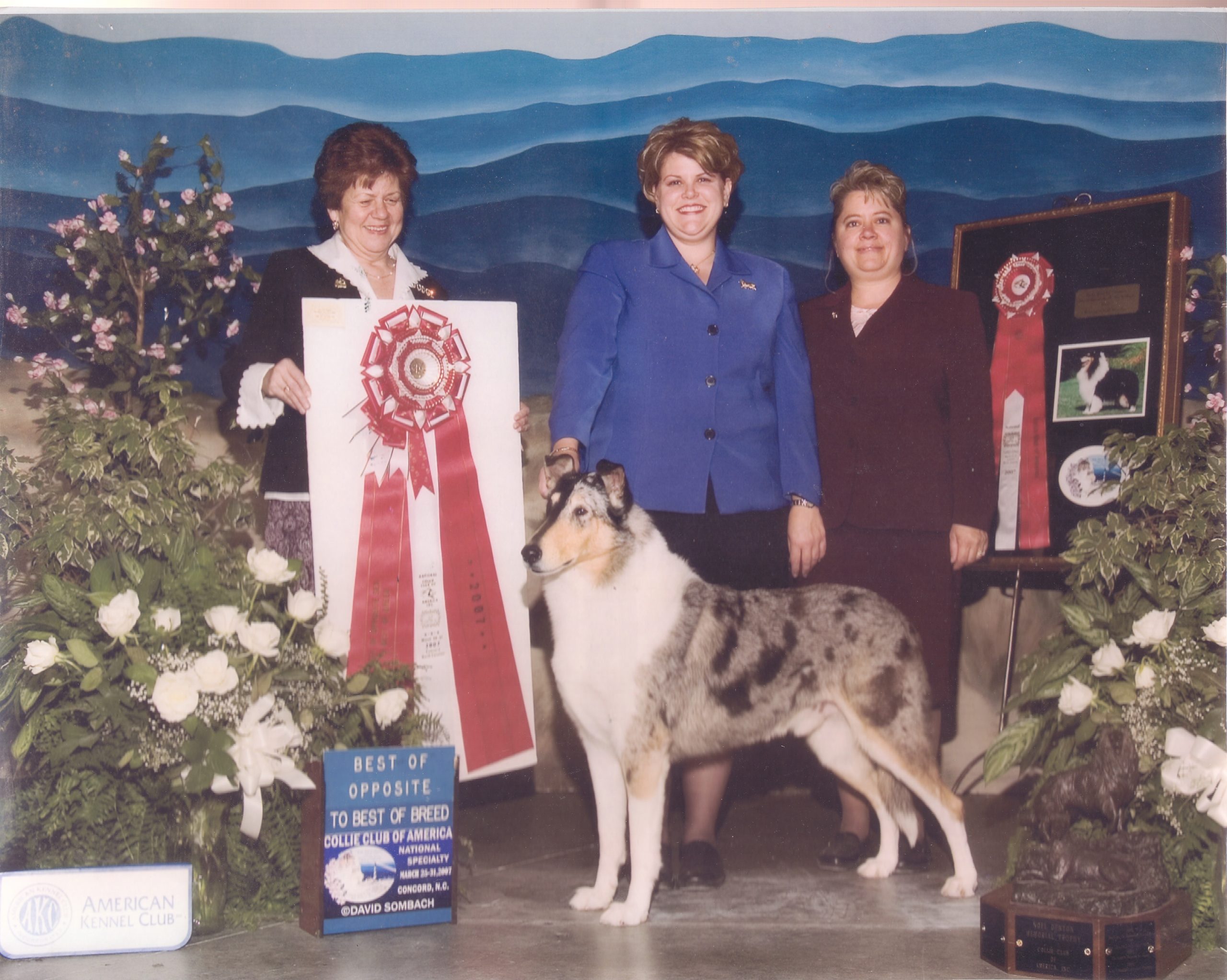
Changes to the Hawkins System
Changes to the Hawkins System rules or point structure can only be made by the system custodian. Any update first entails careful data modeling and analysis to understand how it would impact the results.
Legitimate calls for change require an understanding of the Hawkins System’s purpose. Without that, requests can be misguided and potentially endanger the system. Historically, most demands have been driven by self-interests and are fundamentally opposed to the system’s original intent. Any changes intended to pull the Hawkins System results closer to other systems or make rankings easier to achieve must be dismissed.
While the Collie Club of America cannot dictate changes, the CCA President may ask the system custodian review specific elements. Any request is considered on its merit, intent, and feasibility.
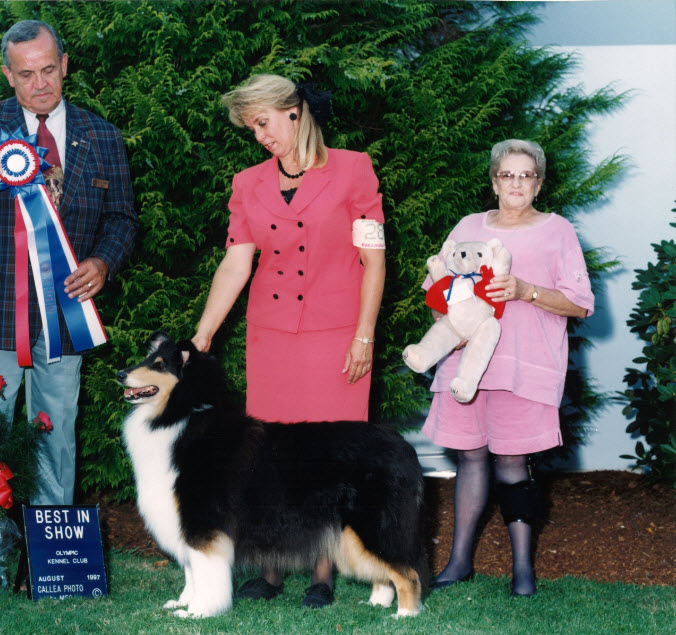
Common Misunderstandings
There are a few frequent misunderstandings about the Hawkins System. That is not surprising considering the intentional intricacies of the system. Let’s review each to gain full understanding.
All-Breed Shows: The most common misconception about the Hawkins System is that it devalues all-breed shows, minimizing the impact of those wins on the rankings. This is not accurate. The Hawkins System has a detailed model that awards bonus points for Group placements, Group wins, and Best in Shows, based on the total amount of dogs competing. The largest bonus points available in the Hawkins System are for major all-breed Group 1s and Best in Shows – larger even than for national specialties. Through the decades, including quite recently, there have been multiple Collies that achieved #1 rankings on account of their notable Group and Best in Show success. Those all-breed triumphs are certainly not ignored by the system.
While some wish that small herding group wins held more weight in the Hawkins System, an objective assessment of those wins will show they pale in significance to strong variety competition.
Establishment of Minimum Entries: “Urban legend” has it that Hawkins System’s entry minimums were set equivalent to what was needed for a 3-point major at the time the system was developed. This is revisionist history which Bob Hawkins refutes. Bob began with arbitrary entry levels and used data modeling to determine the optimal separation point between show sizes to include and those to not include. Average entry sizes have no bearing on the Hawkins minimum entry thresholds.
Specialty Bonus Points: Many believe that no points are earned from specialty wins where the Hawkins minimum entry thresholds aren’t met. That isn’t accurate. The specialty bonus points are awarded at all specialties, regardless of size.
Ownership: The Hawkins System is not the property of the Collie Club of America, as many believe. It is privately owned and operated. This is intentional to preserve the original design of the system and avoid rash changes by CCA members lacking understanding of the system’s intent or those motivated by self-interests. As such, the Collie Club of America is not able to make changes to the system. Only the system’s custodian can adjust the system if conditions warrant.
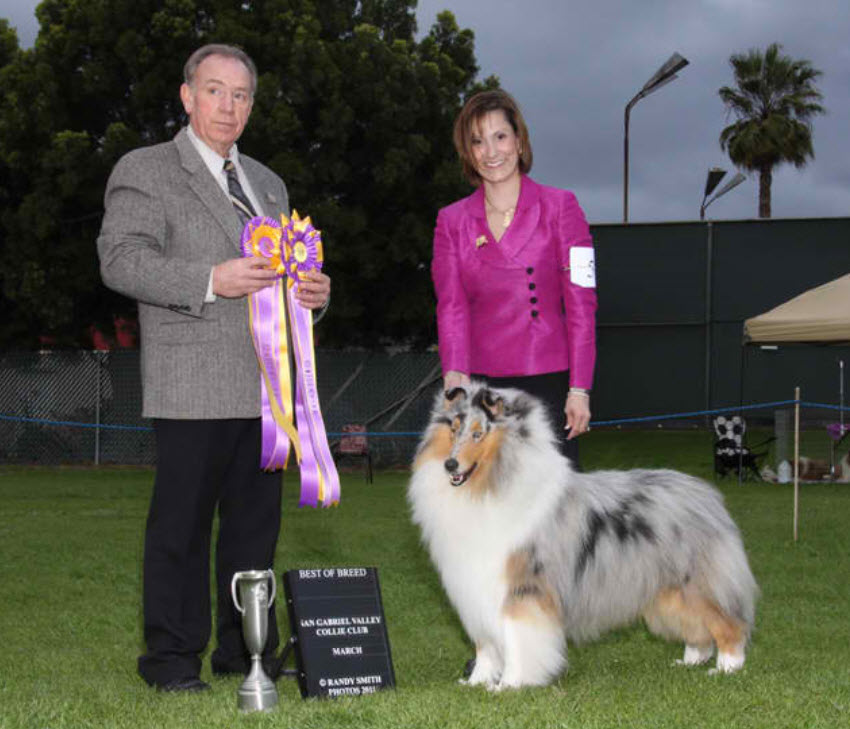
Common Complaints
There are several complaints commonly heard about the Hawkins System. Some have validity and are understandable. Most, however, are made without a clear understanding of the system’s purpose. It may be that so many years have transpired since the CCA’s adoption of the system that current fanciers don’t understand why it is so valued by long-time breeders. Below we’ll explain each area.
Lowering of Hawkins Thresholds: A common complaint is that the minimum entry thresholds should be lowered due to declining entries in the breed. The criteria for all-breed and specialty entry sizes are the same, requiring at least twenty (20) Roughs or eight (8) Smooths to be counted.
Bob Hawkins identified the accumulation of small entry wins as something that negatively impacted the quality of rankings and designed the model to eliminate those wins from the calculations. Cumulative systems often rank Collies that astute fanciers don’t consider to be high-quality dogs. The Hawkins entry thresholds were set to keep those dogs out of the top of the standings
Average entries sizes have no bearing on the thresholds. Whereas AKC entry sizes and point scales are variable over time and region, the Hawkins System is not. There are simply more shows today which the Hawkins System is designed to minimize. That is neither a good nor a bad thing. It is simply the state of the breed and the sport.
Compared to the time when the system was created, it would seem fewer all-breed shows reach the required entry sizes, including a few specialties. However, a great majority of specialties continue to draw Hawkins entries in both Roughs and Smooths, including many larger all-breed shows – particularly when specialty or respected herding group judges are adjudicating. These are the shows the Hawkins System was designed to reward.
The Hawkins entry thresholds were set as absolutes to stand the test of time. They are a core tenet to the validity of the results…
Some may argue that rather than lowering the minimum thresholds, Smooth thresholds should be raised as their entry size and quality would seem stronger than when the system began. Bob Hawkins has indicated that this may potentially be a valid idea, but data modeling is necessary to assess the impact on the standings. However, Les Hutchins noted that in his time calculating dog show results going back to the mid-1990s, the annual smooth entry has held quite constant at 1/3 the size (within statistical variance) of the rough entries. He shared that Bob had also noted this through his decades of calculating results. When current specialty entries are analyzed, the quantity of shows drawing Smooth Hawkins entries is very similar to the number drawing Rough Hawkins entries.
The Hawkins entry thresholds were set as absolutes to stand the test of time. They are a core tenet to the validity of the results and remain an effective line of demarcation between important shows and those intentionally ignored to preserve the system’s integrity, and in turn, reward the best Collies.
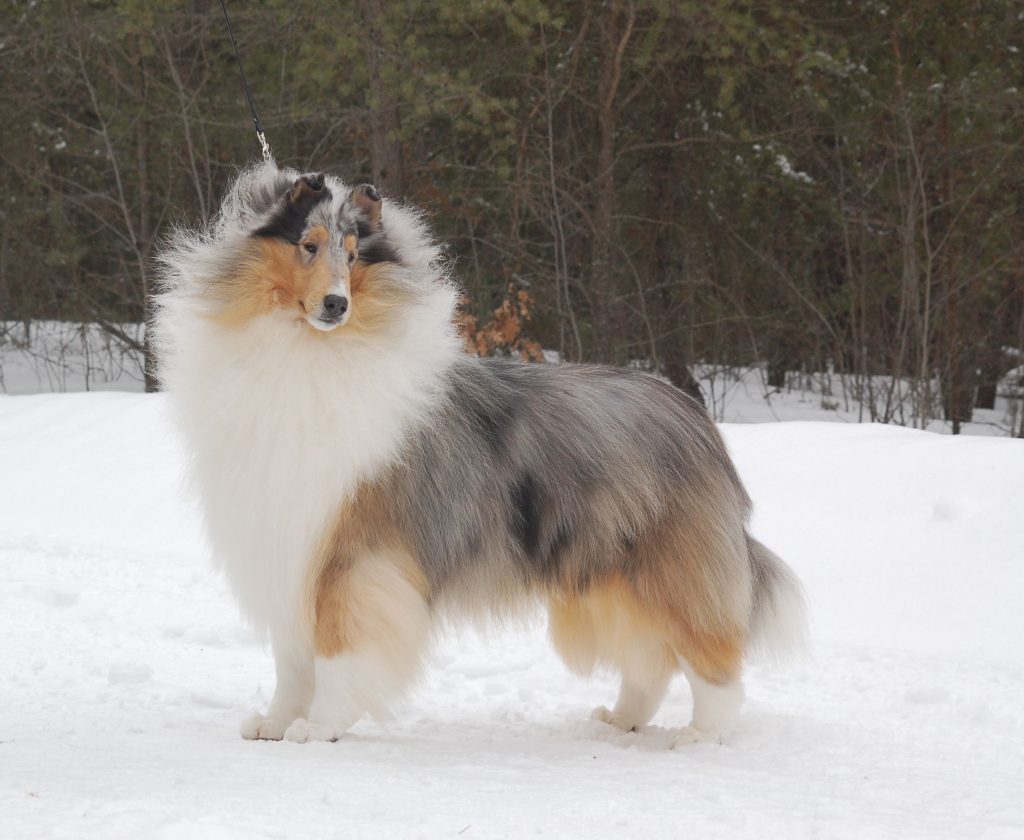
Grand Championship Points: Some think the Hawkins System should be changed in response to the AKC’s Grand Champion program, created in 2010, and the addition of the Reserve Best in Show award, introduced in 2012. There have been many grand championships earned by Collies and several Collies have received Reserve Best in Show honors.
It is important to understand the AKC’s purpose in creating the Grand Championship program. It was designed as an incentive program to drive incremental entries and revenue, and to bring champion dogs back into the show ring. Previously, most dogs were never shown again after finishing their championship. As a result of the program, the specials classes are now markedly larger. In consideration of the program’s goals, it has been a resounding success.
However, it is crucial to realize that every Select has been defeated within its own variety and sex. Similarly, a Reserve Best in Show dog has been defeated by the Best in Show winner. The Hawkins System is not designed to reward defeated dogs. Doing so would violate its intent and purpose. Another important point that many mistake is that Selects do not defeat the class entries – which typically comprise much of the total entry. Only the BOV and BOS winners defeat the class entry. There is no direct competition between Selects and Winners Dog or Winners Bitch. Neither are eligible for the other’s awards or points. The only dogs that Selects defeat are other defeated specials.
The Hawkins System is not designed to reward defeated dogs. Doing so would violate its intent and purpose.
No other established ranking system factors Grand Championship points into its calculations. The AKC created and manages its own Grand Championship Points Rankings. The results are noticeably different from other ranking systems (cumulative or weighted) and it is specific to Grand Championship competition.
Standing Updates: The Hawkins System is calculated and published annually – typically in early February. The commercial systems are published monthly. There is an understandable desire for the Hawkins standings to be updated throughout the year – monthly or even quarterly. Ranking status can influence campaign strategy and show schedules.
This issue isn’t a problem with the Hawkins System, but it is an inherent limitation of time and resources. CCA members must understand that the Hawkins System isn’t a commercial, for-profit entity. There isn’t a paid staff to support regular updates and maintenance throughout the year. All computations are completed by volunteer hours.
While there have been advances in the way the AKC stores and distributes data, the Hawkins computations are still a manual process. If monthly calculations were to be done, nearly 1,500 Collies would need to be included, whereas the annual calculations only require approximately 65 BOV & BOS winners to be tabulated. Additionally, AKC charges for its data. Monthly data orders would increase costs. Currently, it isn’t feasible for the Hawkins System to offer all the amenities of the commercial systems. Perhaps there will be ways to further automate the Hawkins data processing in the future and make periodic updates possible.
Contenders learn the Hawkins point model and maintain calculations for their dogs and close competitors. While this may be considered an inconvenience by some, it has been done by competitors for decades. Many Collie fanciers track Hawkins standings as a hobby. It only requires an understanding of the model and basic math skills.
Geographical Challenges: Collie fanciers living in remote or low Collie number areas may struggle to place a Collie in the Hawkins System if they aren’t willing to travel to important shows. This isn’t an issue with the system, but a spatial challenge for those fanciers with where they live. As in many career paths or life endeavors, there are certain major events in which participation and success are necessary to prove one’s legitimacy. Core to the Hawkins System model is the requirement to defeat strong competition. If the entries aren’t large enough in a certain region, it may be necessary to travel or put the dog with a professional handler.
To use another horse racing analogy, top trainers plotting out a strategy to earn Horse of the Year honors wouldn’t target graded stakes races at Sunland, Evangeline or Emerald Downs racetracks. Instead, they would focus on Grade 1 races at Saratoga, Santa Anita, and Churchill Downs. There isn’t a bias against smaller tracks – they simply don’t attract top competition. Defeating strong competition is imperative to top-level success.
Specialty Entries: With a few regional specialties struggling to reach Hawkins entry thresholds, some ask why all specialties aren’t included under the Hawkins System. After all, most specialties are judged by breeder-judges and supported by the area’s breeders. Bob’s intent was to provide uniformity and balance between specialty and all-breed shows and the shared entry thresholds provide that.
When the system was created, essentially every specialty pulled Hawkins minimums. Bob indicated that the inclusion of all specialty results is an interesting concept but, again, it would need data modeling to understand the impact. Of all the ideas, this one would seem least likely to significantly change the results. However, entry size is a critical component of the Hawkins System. It is possible that the BOV and BOS/BOV winners of small specialties would not be of quality to prevail in stronger competition. As mentioned previously, it is important to remember that bonus points are awarded at all specialties, including those that don’t meet the minimum entry thresholds.
Inter-Variety Points: Occasionally there are complaints that BOB and BOS/BOB specialty winners don’t earn the total entry points of the other defeated variety – they only earn the bonus points. The original design was to reward variety competition first and foremost. If all entry points were awarded, disproportionate quality and entry sizes between the varieties could potentially skew results. For example, in a region with large rough entries but marginal quality specials, a Smooth BOV could win a disproportionate amount of Rough entry points with multiple BOBs. A superior Smooth in another part of the country may not be able to prevail in the standings if it’s facing stronger Rough competition for BOB. By not crossing variety entry points, it maintains a level playing field within each variety. The Hawkins Rules state that comparison of results between Roughs and Smooths is not valid and is not to be performed.
Ranking Comparisons: Occasionally there are complaints about certain dogs being ranked markedly lower in the Hawkins System than in the rest of the cumulative systems. Invariably, these are dogs that haven’t won repetitively over strong Collie entries. It is important to remember the Hawkins System is designed to be different from cumulative systems.
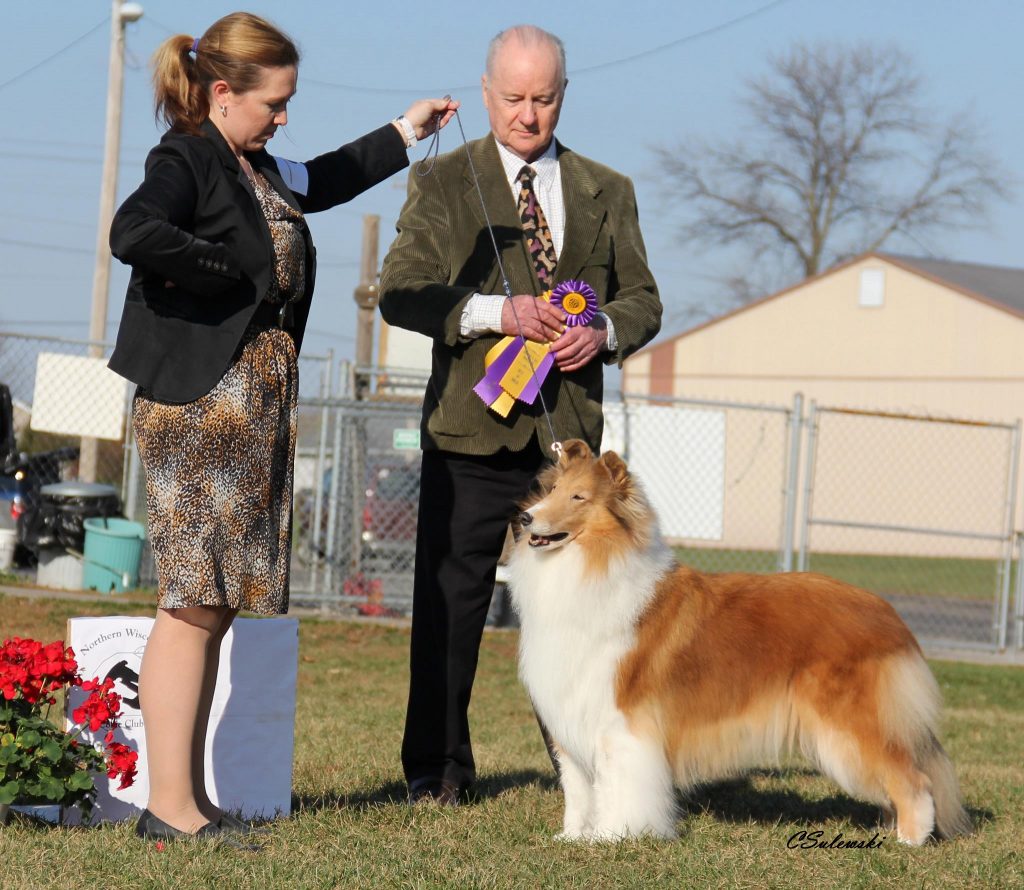
Final Thoughts:
The dog show sport has numerous established ranking systems. Each exists for a specific purpose and is intended to measure different accomplishments. It is the differences between them that must be understood. If the goal is to be recognized by the Hawkins rankings, the solution is simple: Win more, larger, competitive Collie shows.
The Hawkins System was not the arbitrary invention of a clever Collie fancier 60 years ago. Instead, it was meticulously designed for a specific purpose. It was data-modeled to establish its statistically significant integrity. Any change that would make the Hawkins System less stringent is not in the best interest of the Collie. At a time when preservationist breeders should be raising the bar on what is considered a great Collie, lowering the standards of our breed’s time-proven ranking system would be harmful. Rankings are a zero-sum game. For every dog that would be moved up with a structural change, another dog must be moved down. If the top Hawkins dogs are carefully considered — along with their wins and the competition defeated under the best judges — are you prepared to move lower dogs ahead of them?
No dog show ranking system is perfect. Even under the Hawkins System, the best Collie doesn’t always finish #1. On occasion, the dog with the most ultimately wins enough to beat the best – particularly in cases where expert breeders are more concerned with producing the next generation or maintaining a healthy life balance. The Hawkins System isn’t just about #1 but also recognizing the strongest group of top Collies in the breed. A Hawkins System Top 10 is a career honor for a Collie.
Nearly six decades after its development, the Hawkins System continues to effectively fulfill its original purpose to recognize the best Collies of the year—better now than ever. It is the gold standard under which other ranking systems fall short. The Hawkins System is a treasure of the breed, woven into the fabric of Collie history and tradition. Protect it and protect our breed.
ABOUT THE AUTHOR: Matt Stelter is a Collie Club of America Quarter Century member. Breeding Collies under the Wyndlair kennel name, he and his wife, Anita Stelter, have produced multiple #1 Collies (All Systems), Register of Merits (ROM), National Specialty & Best in Show winners. Matt judged Best of Variety/Intersex at the 2019 Collie Club of America National Specialty in Peoria, Illinois.